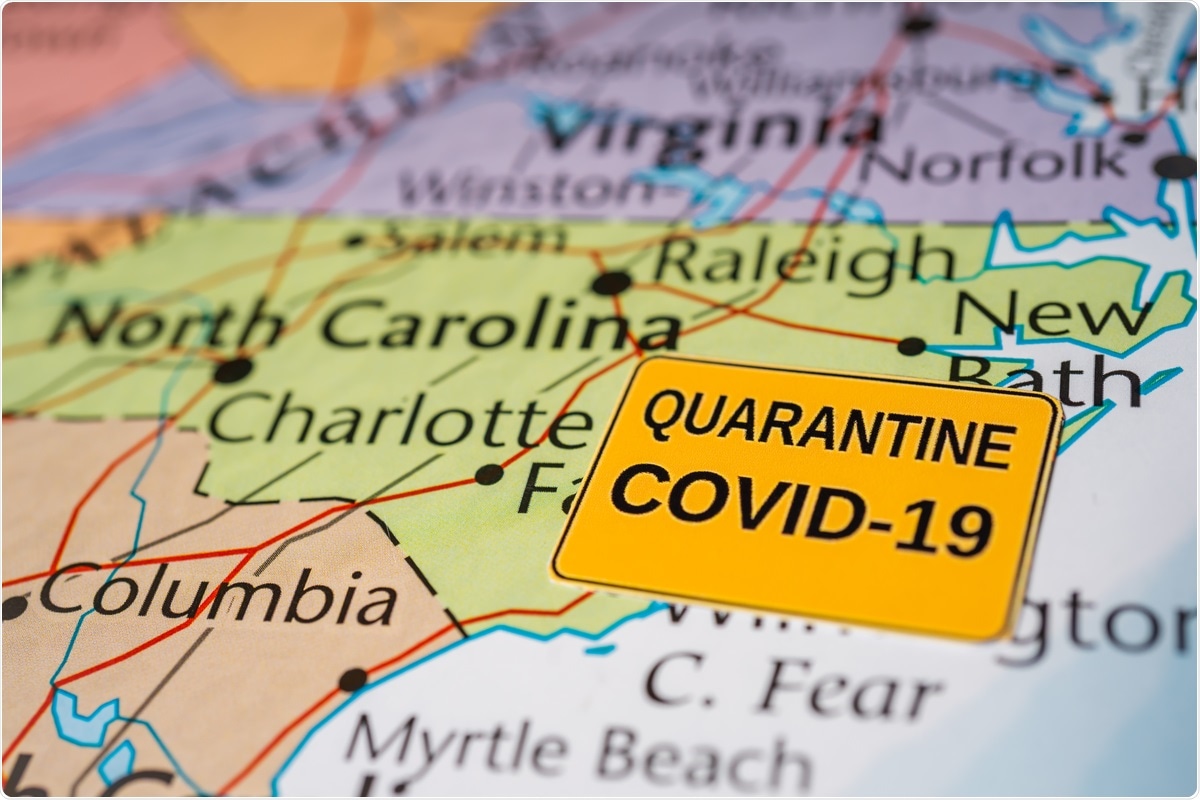Study finds relatively low rate of COVID-19 infection following full vaccination in North Carolina

The severe acute respiratory syndrome coronavirus 2 (SARS-CoV-2) virus is the causal agent of the coronavirus disease 19 (COVID-19) pandemic. Several vaccines have received emergency use authorization from global regulatory bodies, and, subsequently, vaccination programs have commenced in many countries. However, owing to the emergence of SARS-CoV-2 variants, breakthrough infection rates are rising.
 Study: Breakthrough SARS-CoV-2 Infections after Vaccination in North Carolina. Image Credit: Alexander Lukatskiy/ Shutterstock
Study: Breakthrough SARS-CoV-2 Infections after Vaccination in North Carolina. Image Credit: Alexander Lukatskiy/ Shutterstock
A recent study has been published on the medRxiv* preprint server that seeks to investigate the characteristics of individuals with breakthrough infections post-vaccination in North Carolina, USA.
Background
Despite the clinical trial efficacy of available vaccines, breakthrough infections are prevalent and may have significant public health consequences. The existing studies on breakthrough infections are largely around understanding subsequent healthcare system usage and clinical outcomes. Little is known about the causal factors of breakthrough infections, and we need more real-world data to understand the incidence and factors that may facilitate breakthrough infections post-vaccination. This would help identify individuals who might be at greater risk and design appropriate mitigation strategies.
A new study
For this study, fully vaccinated adults were selected with a COVID-19 mRNA or J&J non-replicating viral vector vaccine (n =16,020). Participants were enrolled at six North Carolina healthcare systems between April 13, 2020, and August 14, 2021. The counties were classified as urban, suburban, or rural. Researchers also collected demographic data and healthcare worker status at the time of enrollment.
COVID-19 symptoms included loss of taste/smell, cough, fever, chills, fatigue, shortness of breath, muscle pain, headache, sore throat, congested nose, nausea/vomiting, and diarrhea. The main outcome variable was weeks until the first self-reported infection, which occurred 14 days after vaccination. The secondary outcome was defined as the time to symptomatic infection. Mask usage was adopted as a proxy for risk-mitigating behavior (individuals wearing a mask 90% of the time, in the two weeks after vaccination, while meeting people outside).
Cox proportional hazard models were adopted to estimate hazard ratios (with 95% confidence bands) in terms of techniques used. One minus the Kaplan-Meier curve was used to estimate cumulative incidence. The vaccination quarter had a large effect, owing to which the univariate and multivariate analyses were adjusted for the vaccination quarter before estimating hazard ratios.
Main findings
As mentioned earlier, a total of 16,020 participants were enrolled in the study. 310 (1.9%) reported a positive SARS-CoV-2 test after vaccination. This translated to an event rate of 7.3 breakthrough infections per 100,000 person-years. Researchers observed that the infections were symptomatic in 286 (92%) cases. Median follow-up times following full vaccination were 24 weeks among infected participants and 23.6 among uninfected participants. The interquartile ranges (IQR) were 17–28.4 weeks and 17.4-29.9 weeks, respectively.
The cumulative incidence of breakthrough infection was estimated to be 5.2% (34 weeks after full vaccination). Individuals of age 45 or older were less likely to have a breakthrough infection. Researchers also observed heterogeneity concerning the vaccine received. Individuals who had received the BNT162b2 vaccine were less likely to have a breakthrough infection than their counterparts who had received the Ad26.COV2.S vaccine. Individuals vaccinated with the mRNA1273 vaccine were at least risk of having a breakthrough infection.
Participants from rural and suburban counties had a higher risk of breakthrough infections. Scientists did not observe any association of breakthrough infection with sex, race/ethnicity, or healthcare worker status. Prior self-reported COVID-19 infection, mask usage, or vaccination rate in the county of residence were not associated with breakthrough infections.
Limitations of the study
The results documented in the study may not be generalizable to other parts of the country and, in that sense, are local effects. Further, the findings may be limited by selection and self-reporting biases. Since participants were recruited through their affiliated healthcare system, it is possible that the participants were more engaged in healthcare than the general population, i.e., sample selection bias.
The study only included self-reports of a new positive test for COVID-19, thereby missing paucisymptomatic or asymptomatic infections. One should also be mindful that the results documented in this study are contingent on the transmission rates within the community, which could change during the pandemic.
Conclusion
In this study, scientists constructed a large observational study in North Carolina (USA) and documented an event rate of 7.3 breakthrough infections per 100,000 person-years. Such infections were common among the younger population, individuals living in the rural areas, and those administered the Ad26.COV2.S vaccine. These individuals should be targeted, and additional risk-mitigating strategies should be adopted to protect them from infection and prevent the further transmission of SARS-CoV-2.
*Important Notice
medRxiv publishes preliminary scientific reports that are not peer-reviewed and, therefore, should not be regarded as conclusive, guide clinical practice/health-related behavior, or treated as established information.
- Uschner, D. et al. (2021) "Breakthrough SARS-CoV-2 Infections after Vaccination in North Carolina". medRxiv. doi: 10.1101/2021.10.10.21264812.
Posted in: Medical Science News | Medical Research News | Disease/Infection News
Tags: Clinical Trial, Coronavirus, Coronavirus Disease COVID-19, Cough, Diarrhea, Efficacy, Fatigue, Fever, Headache, Healthcare, Muscle, Nausea, Pain, Pandemic, Public Health, Respiratory, SARS, SARS-CoV-2, Severe Acute Respiratory, Severe Acute Respiratory Syndrome, Sore Throat, Syndrome, Throat, Vaccine, Viral Vector, Virus, Vomiting

Written by
Dr. Priyom Bose
Priyom holds a Ph.D. in Plant Biology and Biotechnology from the University of Madras, India. She is an active researcher and an experienced science writer. Priyom has also co-authored several original research articles that have been published in reputed peer-reviewed journals. She is also an avid reader and an amateur photographer.
Source: Read Full Article




